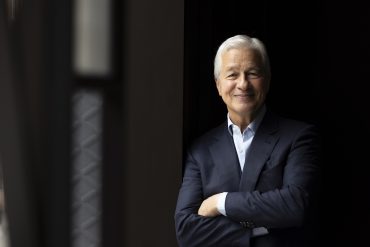
- AI Infrastructure
- Cloud
- Data Centers
OpenAI, SoftBank’s Stargate Stalls as $130B Deals Shift
5 minute read

AI infrastructure project Stargate fails to secure data centers as OpenAI pursues independent $130 billion in cloud deals
Key Takeaways
- $500 billion Stargate project stalls with OpenAI and SoftBank failing to secure any major data center deals six months after the White House announcement, scaling back ambitions to a single small facility in Ohio by end of 2025.
- OpenAI moves independently with $30 billion Oracle deal for cloud computing capacity annually, plus additional agreements with CoreWeave totaling $100 billion in commitments outside the Stargate partnership.
- Partnership disputes derail immediate $100 billion investment as disagreements over control, site locations, and strategic direction prevent the joint venture from executing on its original ambitious timeline.
Introduction
The most ambitious artificial intelligence infrastructure project in U.S. history has hit significant roadblocks. OpenAI and SoftBank’s $500 billion Stargate initiative, announced with White House fanfare earlier this year, has failed to secure any major data center deals and scaled back its immediate goals dramatically.
The project’s struggles highlight the complex realities of executing massive tech infrastructure partnerships. Despite promises of immediate $100 billion investment, internal disputes between the partners have stalled progress and forced a retreat to more modest objectives.
Key Developments
Project Stargate launched as a four-year, $500 billion initiative designed to build advanced AI data centers across the United States. The partnership placed SoftBank in charge of finances under Chairman Masayoshi Son, while OpenAI handled operations, with Oracle, Microsoft, NVIDIA, and Arm as key technology partners.
The venture promised an immediate $100 billion deployment starting in Texas, with plans for additional campuses nationwide. However, Investing.com reports that six months later, no major deals have materialized.
A 1.2 GW data center under construction in Abilene, Texas, carries the Stargate label but proceeds without SoftBank involvement. The partners now aim for a modest data center in Ohio by end of 2025, representing a stark reduction from the original scope.
Market Impact
Market reactions remain mixed as investors assess the implications of the high-profile setback. Some view the delays as evidence of overblown expectations in AI infrastructure spending, while others point to continued robust demand for AI computing resources.
OpenAI’s independent deal-making demonstrates the sector’s underlying strength. The company’s $30 billion annual agreement with Oracle for cloud capacity, combined with expanded arrangements with CoreWeave worth $4 billion additional to an existing $11.9 billion commitment, brings total investments near Stargate’s original 2025 targets.
The divergent paths suggest the market will find ways to meet AI infrastructure demand even when large joint ventures encounter difficulties.
Strategic Insights
The Stargate struggles expose fundamental challenges in managing complex tech partnerships at scale. Disagreements over control, site locations, and strategic direction have prevented two major players from executing their shared vision, despite clear market demand.
OpenAI’s independent progress suggests companies may prefer direct relationships over complex multi-party arrangements. The shift toward fragmented, partnership-driven approaches reflects how firms balance control, investment risk, and operational flexibility in the rapidly evolving AI landscape.
The setback also highlights operational realities in building massive tech infrastructure, where ambitious timelines often clash with regulatory, financial, and logistical constraints.
Expert Opinions and Data
Industry data supports the underlying demand driving these infrastructure investments. Generative AI adoption among business leaders rose from 55% to 75% over the past year, creating urgent needs for scalable computing resources.
The timing pressure intensifies as AI capabilities advance rapidly. OpenAI’s 2025 models now feature multimodal capabilities, advanced reasoning, and real-time data integration, all requiring enormous compute resources that current infrastructure struggles to support.
Agentic AI represents another major trend for 2025, with most IT leaders expecting to invest in autonomous, task-performing AI agents within six months. These technologies demand the type of massive data center capacity that Stargate originally promised to deliver.
Industry analysts note that the vision of a single, dominant AI infrastructure provider appears less likely in the near term, with fragmented approaches becoming the norm as companies navigate competing priorities.
Conclusion
The Stargate project’s challenges underscore both the enormous potential and formidable obstacles in building next-generation AI infrastructure. While the joint venture has stalled, OpenAI’s independent progress demonstrates that market demand remains strong and alternative pathways exist.
Both companies maintain public commitment to their partnership despite internal disagreements. The focus now shifts to delivering the scaled-back Ohio facility while the broader AI infrastructure race continues through other channels and partnerships across the industry.








